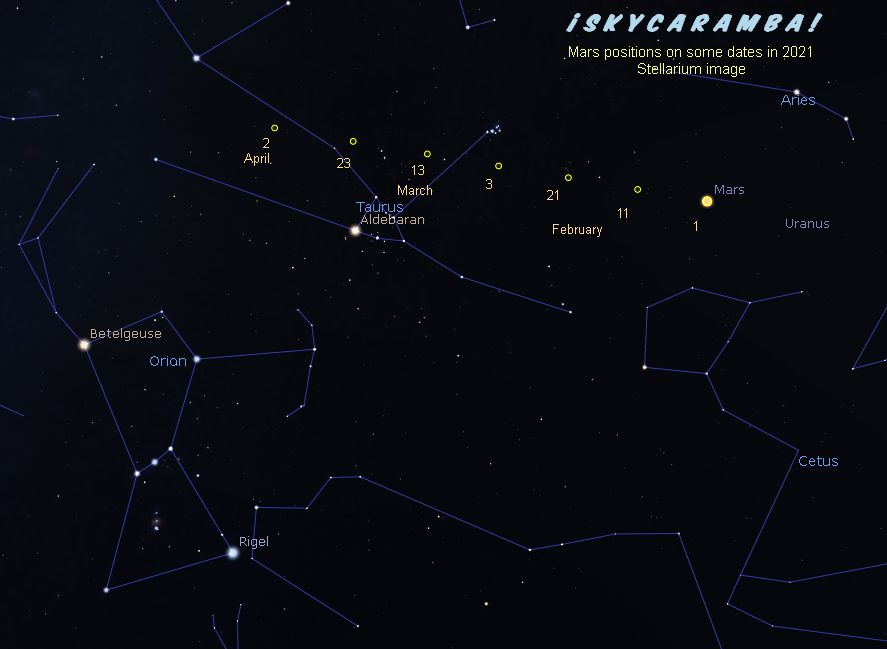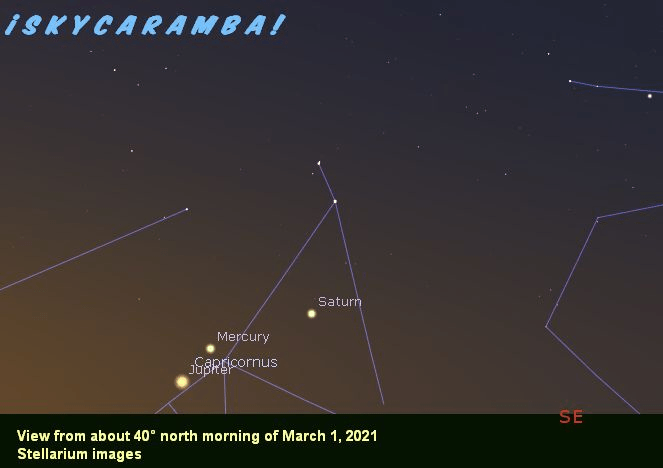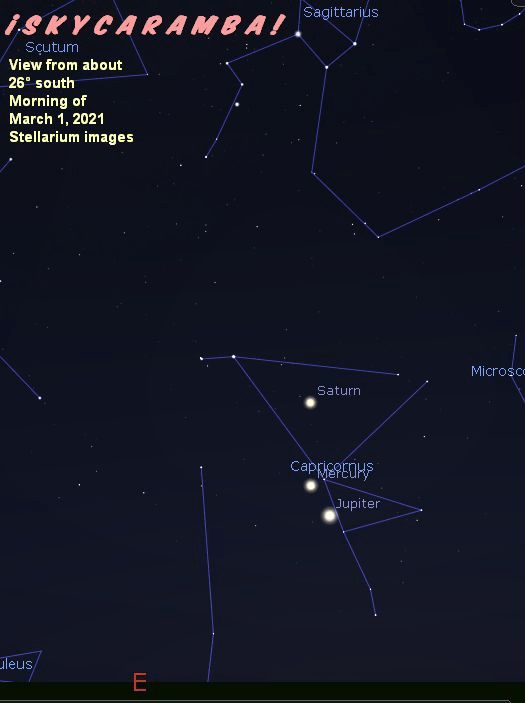Cetus, Pisces, and Pegasus are setting as night sets in. Gemini, Taurus, and Orion are high at sunset. Leo is an all night constellation. Mars is in Taurus when March begins. It passes close to the Pleiades in the first week. Around the 15th through 19th, the red planet passes through a set of stars sharing the name Alkalbain. The moon is near on the 19th. By the end of March as Taurus is lower in the west, Mars is above the Hyades V with orange Aldebaran and below Elnath in Auriga.

Libra rises around local midnight.

A cluster of planets rises shortly before the sun. Saturn is highest, Mercury is next, and Jupiter is below it when the month starts. Mercury is moving toward Jupiter and passes it on the 4th and 5th. The messenger planet is at greatest elongation on the 6th, 27.3° west of the sun. A waning crescent moon is in the neighborhood on the 9th and 10th. For northern hemisphere viewers, Saturn and Jupiter stay barely above the solar glare as Mercury disappears into it in the second half of March. In the southern hemisphere, sky watchers will still see the messenger planet above a clear horizon in the morning at the end of the month. From 25° south, Mercury rises 1 hour, 12 minutes before the sun nearly above it on the 31st.

Venus is close to the sun all month. There are no places on Earth that get a good view of it this month. Venus is technically a morning object until the 26th when it’s at superior conjunction and changes to evening status.
The equinox is on the 20th.
Mercury is at aphelion on the 14th. It’s 0.467 astronomical units from the sun.

The asteroid Vesta is at opposition on March 4th. It’s 1.3 astronomical units from the earth. It’s visible in Leo near the star Chertan. Vesta is the brightest of the asteroids, but still is at the limit of what the human eye can see unaided. On the 4th, the moon rises in late evening, giving a few hours to see Vesta without interference from moonlight. You’ll see it easier as the moon rises later night after night.

The moon begins the month on the equator going south. Last quarter is on the 6th. Southern lunistice is on the 7th at 25.2°. New moon is on the 13th and the moon goes north of the equator on the 14th. First quarter is on the 21st. Northern lunistice is on the 22nd at 25.3°. The moon is full and on the equator going south on the 28th.
Lunar perigee is on the 2nd at 365,500 km. Apogee is on the 18th at 405,300 km. A second perigee occurs on the 30th at 360,200 km.
Notable conjunctions in March:
2nd – Moon 6.0° from Spica
5th – Mercury 0.3° from Jupiter, moon 5.0° from Antares
10th – Saturn 3.6° from moon, Jupiter 3.9° from moon
11th – Neptune 1.1° from sun, Mercury 3.5° from moon
19th – Mars 1.9° from moon, moon 5.1° from Aldebaran
23rd – Moon 3.4° from Pollux
26th – Moon 4.4° from Regulus, Venus 1.4° from sun (superior conjunction)
29th – Moon 5.8° from Spica
